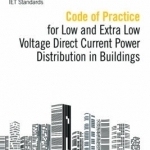Code of Practice for Low and Extra Low Voltage Direct Current Power Distribution in Buildings
BookThis item doesn’t have any media yet
2015 | Business & Finance
Low voltage direct current distribution of power within buildings offers advantages over the traditional mains power supply solutions for an increasing number of services. Low and extra low voltage (LV & ELV) d.c. power distribution allows end users to avoid unnecessary power conversion steps, with potential benefits including carbon savings, energy efficiency improvements and optimisation of space utilisation in buildings. Adoption of d.c power distribution offers an enabling infrastructure to manage the increasing numbers of direct current power devices in buildings - such as consumer electronics, building services, IT equipment, as well as solar photovoltaic and battery systems. This Code of Practice aims to ensure the safe, effective and competent application of cabling / wiring installations for low voltage d.c. power distribution in buildings. Coverage includes: * Requirements for design, specification, selection, installation, commissioning, operation and maintenance. * Solutions for telecommunications cabling, use of existing a.c. wiring and new d.c. wiring infrastructure. * Recognised standards for d.c. power distribution, as well as proprietary d.c. power systems.
The document will be useful to designers, installers and operators of low voltage d.c. power distribution in buildings - including electrical, IT and telecommunications professionals - and of interest to customers, owners and insurers of low voltage d.c. power applications.
Related Items:
| Published by | Institution of Engineering and Technology |
| Edition | Unknown |
| ISBN | 9781849198356 |
| Language | N/A |
Images And Data Courtesy Of: Institution of Engineering and Technology.
This content (including text, images, videos and other media) is published and used in accordance
with Fair Use.
